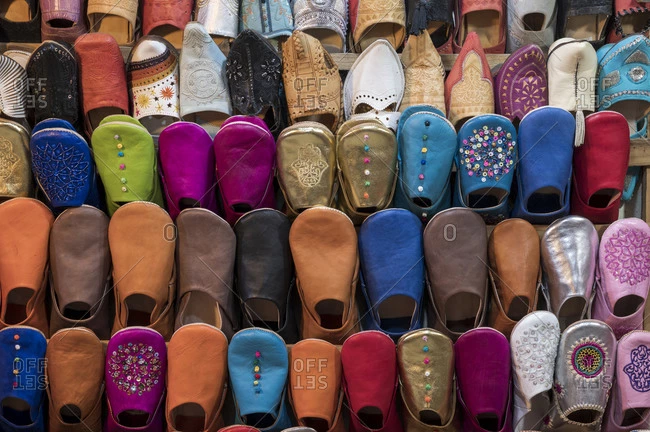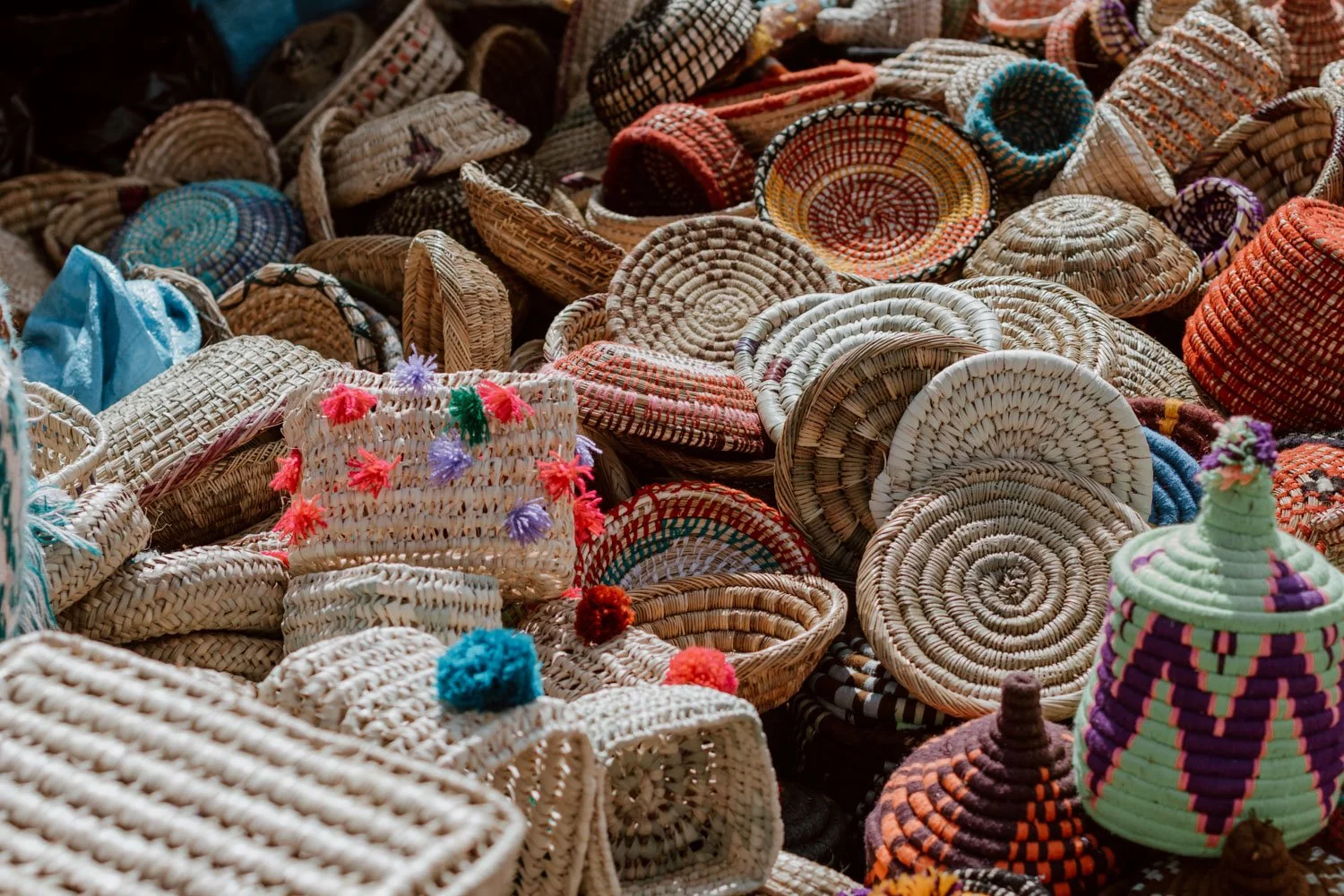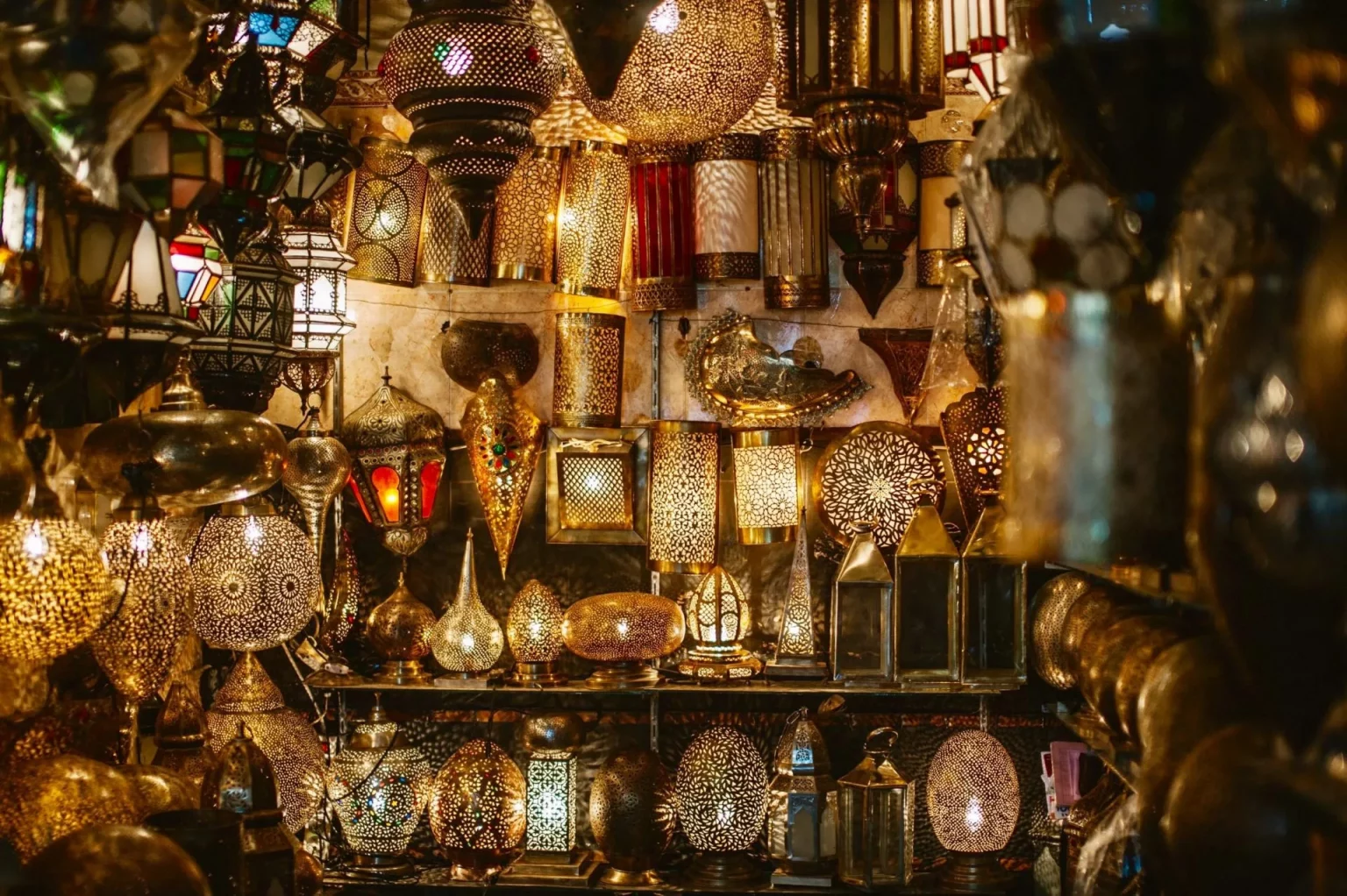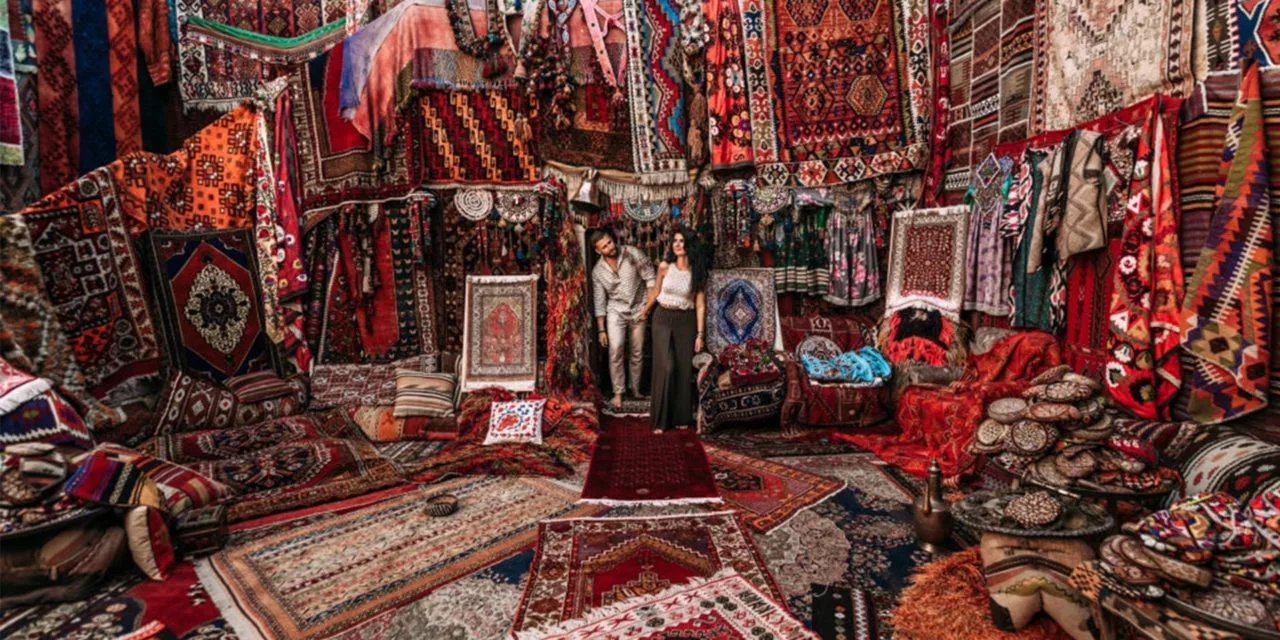Morocco Shopping Guide
Morocco Shopping In Souks & Markets
Morocco shopping Guide
Travel to Morocco and shop in the best souks and markets in the world. Morocco shopping Guide : Souks and markets are a major part of Moroccan life and are among the country’s biggest attractions for Moroccan travelers. Each city has its own special district of souks, big cities like Fez and Marrakech have labyrinths of individual souks (each filling a street or square and devoting a particular tone to handicrafts), and in the countryside, there are hundreds of weekly souks, on a different day in every village in the region. Whether or not you are a big consumer, going to a souk is a cultural experience not to be missed on a trip to Morocco. Find the medina, the central and oldest part of the city, and your journey is almost over. If you feel a bit overwhelmed when you enter a lively neighborhood full of artisan shops, aromatic bakeries and enthusiastic shopkeepers eager to meet you, you’ve found the souk. Travel to Morocco and shop in the souks of Marrakech, Fez and Ouarzazate (Book a tour or call +212600454881. Let us be your travel guide to Morocco.





Morocco shopping Guide For Souks & Markets
Travel to Morocco and shop in the best souks and markets in the world. Morocco Shopping Guide : When the first souks first appeared in Morocco, they were nothing more than small areas outside the city where merchants could display and sell their wares. However, as the population of the cities grew, so did the souks. Today, the souks have become an important part of the culture on a social level and are the heart of any large Moroccan city. Some souks are seasonal or annual while others, such as the Djemaa El Fna market in Marrakech, are famous for their snake charmers, storytellers, musicians, and dynamic acrobatic events. Some villages or areas between villages are actually named after their market day, so it is easy to see when they take place. The souk days are : Souk el Had – Sunday (first market) Souk el Tnine – Monday market Souk el Tieta – Tuesday market Souk el Arba – Wednesday market Souk el Khamees – Thursday market Souk el Sebt – Saturday market There are few village markets on Fridays (el Djemma – “the assembly”, when the main prayers are held in the mosques), and even in the cities, the souks are largely closed on Friday mornings and very discreet for the rest of the day. The village souks begin in the afternoon before the souk day, as people come from all over the region; those living closer to the souk leave early in the morning of the souk day. It may be useful to accompanied by a guide if this is your first trip. A souk can look a bit like a maze and it is easy to get disoriented. One suggestion is to find a map and familiarize yourself with the layout of the souk to minimize the risk of getting lost. There are several sections in a souk that specialize in a single skill or trade. Examples include the Textile Souk, Carpet Souk, Jewellery Souk, Fabric Souk, Spice Souk, and Leather Souk.
Carpets in Morocco
Morocco shopping Guide : If you are looking for a carpet that will not only decorate your home but also contribute to its character, Morocco is a carpet paradise. Morocco shopping Guide will take through a visit to the carpet merchant is an unforgettable part of any souk experience. Expect to drink three or four glasses of sweet mint tea and spend at least half a day there while negotiating for one of Morocco’s finest products. Entering a carpet merchant’s shop is like entering a den of designs that are not alike. Fifteen types of Moroccan carpets and rugs can found in shops throughout the region, from High Atlas carpets, made from 100% wool and dyed with vegetable colors, to woven and embroidered kelim carpets. Prices vary according to the degree of work, from US$6,000 to US$12,000 for a High Atlas carpet to US$5,500 for a reversible carpet (with a summer and winter side) and up to US$150 for a kelim carpet. Prices are generally half to a third of those found in the United States. Arrangements can make with merchants to have shipping and delivery included in the negotiated price. The majority of carpets in Morocco come from Berber villages and are woven rather than knotted on large old loams. Some of the most beautiful carpets with Arabic motifs can found in Fez and Rabat. Moroccan carpets or kilims are particularly famous for the richness of their threads and the brilliance of their colors, created from henna, indigo, saffron, and other organic elements. Although expensive, the high prices of Moroccan carpets as they can last for several hundred years. Depending on the quality of the carpet, the shades can remain almost as bright as the day you bought it on your Moroccan adventure. Morocco shopping Guide : Moroccan carpets are available in many models. The woven kilims or Berber carpets by their geometric patterns and are the most expensive because they made with vegetable dyes. Each tribe has its own unique design. The Maison Berbère chain stores in Ouarzazate, Tinerhir and Risssani are good hunting grounds for a beautiful kelim. Since some Berber carpets can be sold for more than a thousand dollars a square meter, you may want a cheaper alternative. Outside Rabat, there are many tribal carpets, such as the famous Zanafia and Glaoua carpets, which are flat and soft. Other options are flat woven carpets or pile carpets. There are also Berber rugs (fourths or blankets) which are quite striking with red and black stripes spread over their entire surface; for these, visit Tetouan and Chefchaouen, on the banks of the Rif.
Metals in Morocco
Morocco shopping Guide will take you through Brass, copper, and silver which are the most popular metals to buy. As Moroccans gifted in this field, rest assured that almost all purchases made in the metal souk are of high quality. Many Moroccan cities specialize in some form of metalwork. For the money, take a trip to Tiznit or Taroudannt. There you will find daggers, inlaid objects, and silver muskets; the most popular purchase is the hollow-bellied teapot. In Marrakech, Fez, and Tetouan you will also find silver trays and candle holders, brass frames and lamps. In Fez, you can watch artisans in their element as they hammer and cast metal.
Jewelry in Morocco
Morocco shopping Guide : Most jewelry in Morocco made of high-quality gold and silver. Silver jewelry has declined with the loss to Israel of Morocco’s Jewish population, the country’s traditional workers in precious metals and crafts in general; in the south, however, there are some fabulous Berber necklaces and bracelets, which are very large and characterized by bold combinations of semi-precious stones (and sometimes plastic) and pearls. Marrakech, Fez, Essaouira, and Ouarzazate have particularly interesting jewelry souks. For gold jewelry, Fez is the best option. The most famous is the silver hand of Fatima (Fatima was the daughter-in-law of the Prophet Mohammed) which to protect those who wear it from misfortune and disease. Silver jewelry said to be typically Moroccan, as it is often made by the Berbers indigenous to Morocco. While traditional Berber women continue to wear silver jewelry, especially family heirlooms for wedding ceremonies, gold has become the preference of these women, as well as of the modern Moroccan woman, as it is a sign of wealth.
Clothing and leather goods in Morocco
Morocco shopping Guide : Moroccan clothes are easy to buy. The traditional dress of the country called djellaba (a kind of coat). Djellabas come in three styles: Arab (wide, flowing clothing), Berber (with straighter lines) and Pasha (a two-piece garment worn for special events). The djellaba is a long outer dress with a hood and ample sleeves. Men usually wear light colors, which is important because it helps to reflect the strong Moroccan sunshine. Traditionally, men also wear a red fez hat and pointed yellow slippers (baboonish) with a djellaba. Women can also wear light colors, but despite this, they choose to wear brighter colors such as pink, blue and even black. The hood is of vital importance for both sexes because it protects from the sun and was once used as a defense against the sand blown by strong desert winds. It is not uncommon for the hood is used as an informal pouch during periods of good weather. Djellabas made of a wide variety of materials, from cotton for summer djellabas to coarse wool for winter djellabas. The wool is usually harvested from sheep living in the surrounding mountains. A long process of transforming the wool into yarn is then carried out and it is woven into the fabric to create the garment. Djellabas worn by both men and women; the men’s style is generally baggier, darker in color, and plain. Women’s djellabas are tighter and may have elaborate decorative stitching in different colors. Women sometimes add a scarf. Modern djellabas are very fashionable and are currently designed to attract foreigners and young Moroccan women to cities. These fashionable djellabas are often made of cotton, rayon or silk, are woven with sequins or made of damask with wonderful large patterns. Almost all djellabas of both styles have a wide hood called “spike” that ends with a stitch on the back. Traditionally, djellabas go all the way down to the ground, but nowadays they are getting thinner and shorter. The Islamic religion of Morocco is also a key factor in the way Moroccans dress. The djellaba covers the entire body and is, therefore, an acceptable modest outfit. Caftans, a traditional women’s dress that often has tiny V-shaped buttons on the front, are available in a variety of styles and materials ranging from cotton to silk to polyester. Prices for djellabas and caftans start at around US$25 and can go up to US$600 for a second-hand outfit. Morocco shopping Guide of Leather goods are of excellent quality in Morocco because they are hand-dyed, mostly with natural vegetable dyes, sold in souks throughout the country and come in various shades of brown as well as bright pink, lemon green, turquoise, lovely red, canary yellow and magenta. The classic item to buy leather in Morocco is the babouche (shoe) which is open at the heel, immensely comfortable, and produced in the traditional colors yellow, white, red (for women) grey and black. The best selection of leather goods can be found in Fez and Marrakech. The city of Fez is home to a large tannery, one of the most photographed sites in North Africa. Handbags (US$10 or more), glittering leather camel toys (US$3 to US$5) and soft slippers or slippers (US$3 to US$25) are some of the tannery’s most popular items. Outside, street vendors sell colorful bill holders with Moroccan designs for only US$2.50.
Wood and pottery in Morocco
Morocco shopping Guide : Marquetry is one of the few crafts where you will see truly ancient pieces – inlaid tables and shelves – although the most easily exportable objects are boxes and chess sets made of cedar and cedarwood beautifully inlaid in Essouaria. The pottery is colorful and often crude, but the blue and white patterns of Fez and the multicolored pots of Chefchaouen are very attractive. Morocco’s main pottery center located in Safi and has several shops filled with colorful plates, tagines and garden pots. Safi’s tagines are generally more decorative. The best for cooking produced by the Oulja pottery in Sale, near Rabat, in ordinary red-brown earthenware. You can also find these earthenware tagines in the souks of the big cities of Marrakech, Fez, Casablanca, Meknes, Ouarzazate or Tangier.
Food Products in Morocco
Morocco shopping Guide : There is a unique variety of food products in Morocco that are difficult to find at home which makes excellent gifts and souvenirs. Locally produced olive oil has an incredible, distinctive strong flavor and in the Souss Valley, you can find delicious sweet Argan oil. Argan oil is an oil produced from the kernels of the endemic argan tree that for its nutritive, cosmetic and numerous medicinal properties. The tree, a relict species from the Tertiary age, is extremely well adapted to drought and other environmentally difficult conditions of southwestern Morocco. The species Argania once covered North Africa and is now endangered and under the protection of UNESCO. The Argan tree grows wild in semi-desert soil, its deep root system helping to protect against soil erosion and the northern advance of the Sahara. Argan oil remains one of the rarest oils in the world due to the small and very specific growing area. Olives in Morocco come in numerous varieties as do almonds, walnuts, and spices. Morocco is notable for Saffron which is grown in the area east of Taliouine. Cakes, sweets, and biscuits are also famous in Morocco. Some of the best ones can be found in souks and also homemade during religious holidays such as Ramadan or on the Moroccan New Year, Aïd el Kebir.
